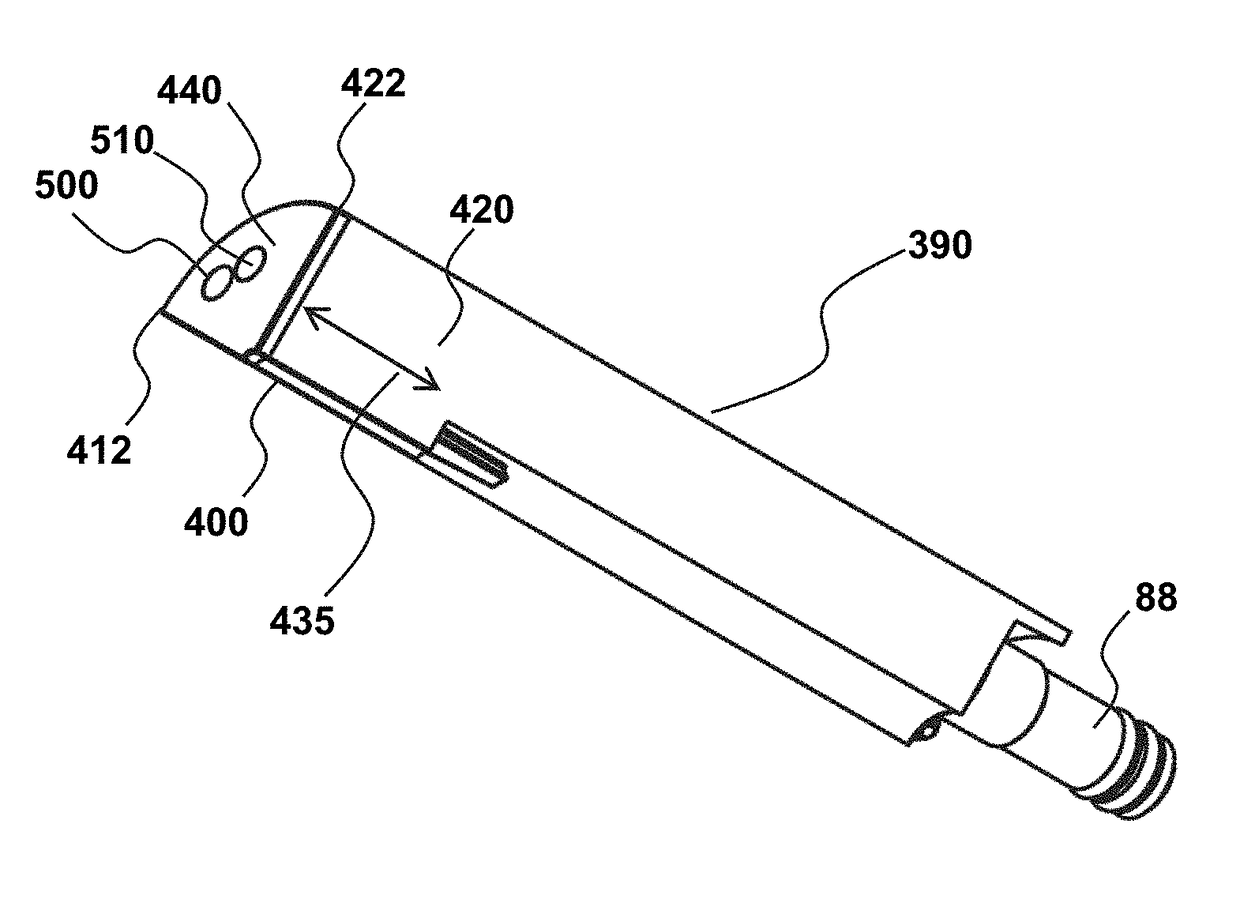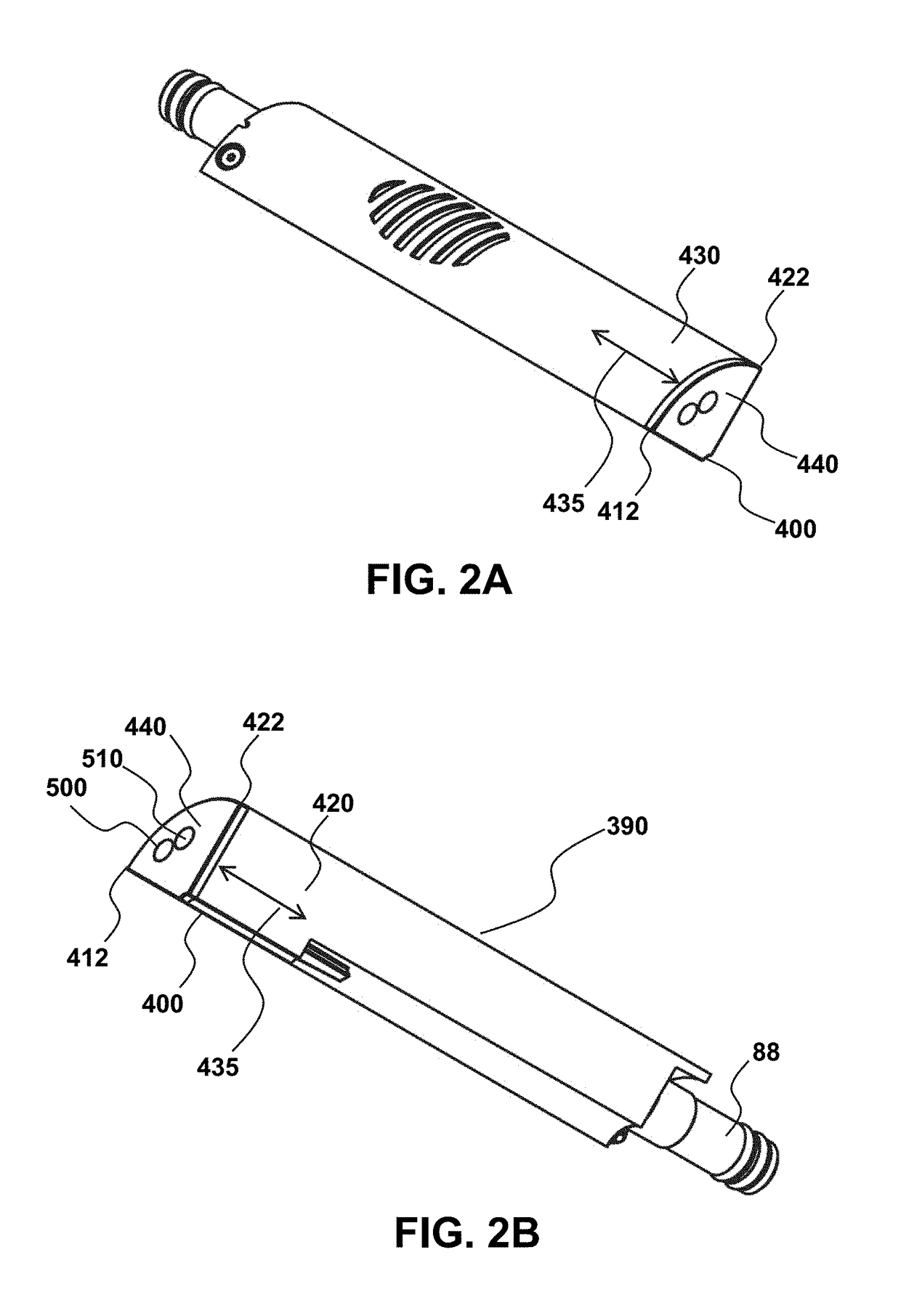Compact sensor for measuring turbidity or fluorescence in a fluid sample
a fluid sample and sensor technology, applied in the field of water quality instruments, can solve the problems of sacrificing sensor performance, affecting the accuracy of measurement results, so as to achieve the effect of reducing the frequency of calibration, sacrificing sensor performance, and inability to reliably position desired optical components
- Summary
- Abstract
- Description
- Claims
- Application Information
AI Technical Summary
Benefits of technology
Problems solved by technology
Method used
Image
Examples
example 1
using Configuration and Form Factors
[0080]The sensors may generally be described as “pie shaped”, and can have an interlocking feature that holds the sensors together. The interlocking feature can be a tongue and grove design that holds all the sensors to the center support that is operably connected to the wiper. This has a number of benefits, including enhancing impact resistance as the interlocking protects the sensors during a drop or impact in situations where the sensor guard is not installed. It also holds the sensors tightly together and makes sensor guard installation easier. Without the interlocking feature the sensors tend to splay out and have to be pushed together to install the tightly fitting sensor guard.
[0081]Referring to FIG. 1, a distal sending end 395 is illustrated from a top-view to show a sensor housing 390 comprising a vertex region 400 from which a first surface 410 and second surface 420 extend to first surface end point 412 and second surface end point 422...
example 2
omponents in Distal Sensing End
[0089]Optical components positioned within the distal sensing end volume are schematically illustrated in FIG. 4. Optical light source 520, such as a large diameter (5 mm or larger) LED is optically connected to the emission window 500 for providing electromagnetic radiation generated by the light source to a fluid sample volume 530 positioned adjacent to the distal sensing surface 440. Also illustrated is reference photodetector 540 in optical communication with a portion of the electromagnetic radiation emitted from the light source 520 and signal photodetector 550 in optical communication with collection window 510 for detecting light transmitted through the collection window that is associated with scattering by or fluorescence of material in the fluid sample volume 530. A beam splitter 560 may be positioned in optical communication with the light source 520 to reflect a portion of the electromagnetic radiation to the reference detector 540 to comp...
example 3
ard
[0093]The sensors provided herein may be used with a sensor guard, such as the sensor guard 176 of FIG. 6A having a plurality of passages 174 with interspersed solid guard sections 173. FIG. 6B is a sectional view along a central plane of the distal end of the sensor to the sensor guard cap 177 of sensor guard 170. An internal surface 270 of sensor guard cap 177 faces the distal sensing surface 60, and is separated by a sample distance 271. The sample distance 271 forms a corresponding sensing volume, a portion of which will correspond to a sample volume 533 that includes a sensing height 700 (defined as the distance between the sensor end and the particle in the fluid sample interacting with the incident light) and a nominal light path from the light source 702 and corresponding scattering by and / or fluorescence light path 704 of particles in the fluid sample. Accordingly, nominal optical path length is the sum of the length of 702 (light path from optical source to sample) and ...
PUM
| Property | Measurement | Unit |
|---|---|---|
| angle | aaaaa | aaaaa |
| surface area | aaaaa | aaaaa |
| vertex angle | aaaaa | aaaaa |
Abstract
Description
Claims
Application Information
 Login to View More
Login to View More - R&D
- Intellectual Property
- Life Sciences
- Materials
- Tech Scout
- Unparalleled Data Quality
- Higher Quality Content
- 60% Fewer Hallucinations
Browse by: Latest US Patents, China's latest patents, Technical Efficacy Thesaurus, Application Domain, Technology Topic, Popular Technical Reports.
© 2025 PatSnap. All rights reserved.Legal|Privacy policy|Modern Slavery Act Transparency Statement|Sitemap|About US| Contact US: help@patsnap.com



